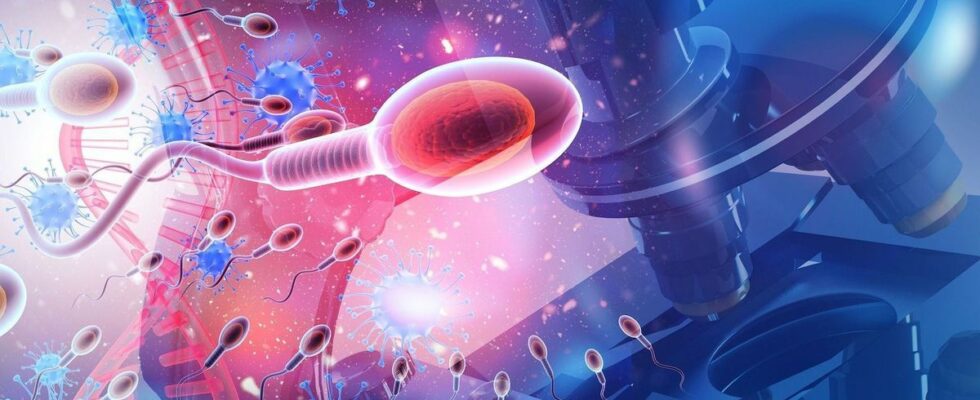Published on
Updated
Reading 2 min.
Chinese scientists have been interested in the link between exposure to microplastics and male fertility. The latter analyzed nearly forty samples of men’s sperm. Researchers found traces of plastic in all samples studied, with potential effects on sperm motility.
Microplastics are present in our food, in our clothing… but also in male semen! A study carried out in China looked at the link between exposure to polymers (a group of compounds found in certain plastics) and the quality of sperm in individuals not professionally exposed to these materials. “Microplastics are ubiquitous environmental contaminants that have been detected in human semen from polluted areas, but their prevalence and effects in the general population remain largely unexplored“, underline the authors of the work.
To learn more about the potential amount of microplastics present in human semen and try to determine the extent to which it may interfere with male fertility, researchers analyzed semen samples taken from 36 healthy adult men, collected during premarital assessment evaluations (term to designate preconception medical consultations). During laboratory tests, researchers detected microplastics in all semen extracts studied, with at least two particles per sample. Eight types of polymers have been identified including PS (polystyrene), PE (polyethene) and PVC (polyvinyl chloride).
The study notes a difference in sperm mobility, which may vary depending on the type of plastic. Sperm exposed to polystyrene, for example, showed a progressively higher mobility of sperm than in the group exposed to polyvinyl chloride. Morphological abnormalities of spermatozoa were also observed, but were not significantly associated with specific plastic types. “The effects of exposure to different microplastic polymers on progressive sperm motility vary, highlighting the need for further research into how microplastics affect male fertility due to their ubiquity and potential reproductive toxicity“, conclude the researchers.
This is not the first study to detect microplastics in human semen. An article published last May in the journal Toxicological Sciences mentions analyzes carried out in New Mexico (United States) on 23 samples of male semen. Six months earlier, Italian researchers explained (in another research) that they had found pigmented microplastic fragments spherical or irregular in shape in six (out of ten) human semen samples.
